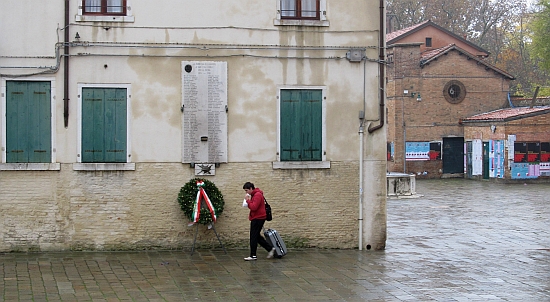Search results
7 results found.
7 results found.
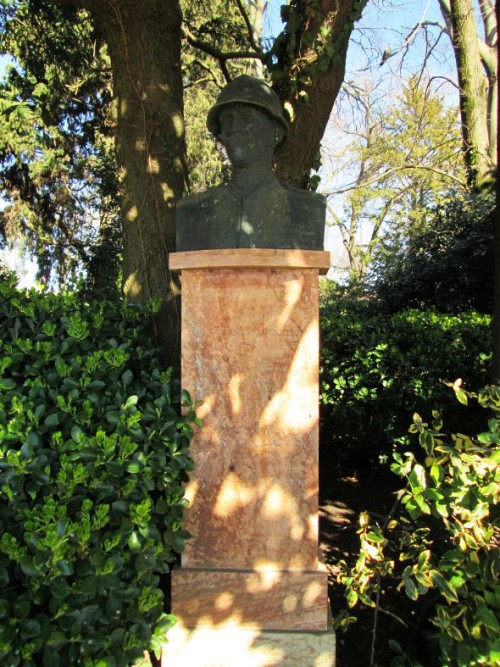
November 4 is a landmark date, the anniversary of the signing of the peace treaty between Italy and Austria in 1918 that ended the First World War. I have drawn attention to this event more than once.
For many reasons, World War I maintains an unusually lively presence in my thoughts here. A new reason, recently discovered, is Giorgio Emo Capodilista, one of Italy’s more heroic commanders in a war which, as far as I can tell, was fabulously deficient in even merely competent commanders. I discovered him posing quietly in the Giardini Pubblici behind some shrubs and lashed to the pedestal by a few stalwart cobwebs. I realize that once-famous people are forgotten every day, but neglect is depressing.
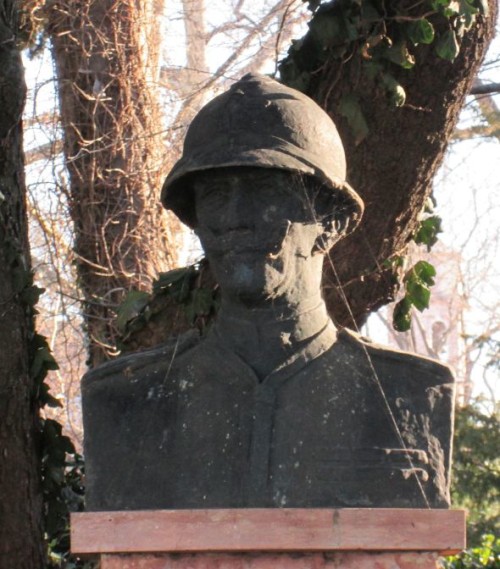
Cast in bronze — and only a third of him, at that — he looks imposing. The moustache is excellent. But one has to picture this man in action: Cavalry. Swords. The infamous Retreat from Caporetto. And a strength of purpose for which bronze is a poor substitute.
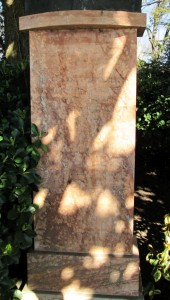 The inscription, now barely legible, refers in shorthand to an exploit worthy of his comrades of the Light Brigade:
The inscription, now barely legible, refers in shorthand to an exploit worthy of his comrades of the Light Brigade:
PATRIZIO VENETO GENERALE COMANDANTE LA II BRIGATA DI CAVALLERIA REGGIMENTI GENOVA E NOVARA DEGNO FIGLIO DELLA STIRPE SUI CAMPI DI POZZUOLO DEL FRIULI OPPOSE IL VALORE SUO E DEI PRODI AL NEMICO INVASORE PERMETTENDO SALVEZZA DELLA III ARMATA E SBARRANDO LA VIA DI VENEZIA 29-30 OTTOBRE 1917 GIUGNO 1960
Veneto patrician General Commandant of the II Brigade of the Cavalry Regiments of Genoa and Novara Worthy son of the lineage On the fields of Pozzuolo del Friuli opposed his and his courageous ones’ valor to the enemy invader Permitting the deliverance of the III Army and barring the way to Venice 29-30 October 1917 June 1960.
It sounds very neat and contained, the way these things do on inscriptions. One needs context.
The 12th Battle of the Isonzo, better-known as the Battle of Caporetto, was fought from October 24-November 19, 1917 between the Italian and the Austro-Hungarian armies. To fight the preceding eleven battles in the same area had occupied more than two solid years.
The dimensions of the Italian defeat are still difficult to grasp. According to John Farina (“Caporetto: A Fresh Look,” La Grande Guerra):
“Italian casualties totaled 40,000 dead and wounded, over 280,000 prisoners and 3,150 artillery pieces captured. The Italian army was reduced in size by one half, from 65 infantry divisions to 33.
A message carrier, Attilio Frescura, described what he saw at the bridge across the Isonzo at Caporetto:
‘At one end of the bridge a Lt. Col. was screaming that they had to advance across the bridge. At the other end a Captain, with pistol in hand, was ordering everyone “Back! Back!”. Wagons had been dumped in the river in an attempt to clear the bridge. In the meantime, engineers started planting explosives and preparing to blow the bridge before the eyes of thousands of soldiers from the 46th division that were trying to escape across it.’
Frescura delivered his message to Lt. Col Trezzani who “…ordered me and several others to stop the wave of runaways that was flooding the area and sweeping everyone away with them. We blocked them on the roads and stopped those that had their weapons. Those that had no weapons were allowed to continue to not jam things up. But then many of the armed soldiers saw what we were doing and threw away their rifles…
“…the battle had moved to the roads, but the battle was lost. I found an officer from my unit. He yelled at me:
Go or they’ll get us!
I asked:
But what about the others?
Go! Go! Everyone go! Run!
We hopped on the running board of our staff car in which I saw some of the officers of my unit. All around the car was a cowardly mass of humanity grabbing onto the car screaming wildly “Go! Go!”
Even our honor – gone.”
The astonishingly rapid advance of the Austrian forces made it imperative to protect the retreating army. By the evening of the next day (October 25), the entire Italian 3rd Army and what was left of the 2nd Army were at risk of being surrounded. The Italian forces were ordered to retreat to the Tagliamento River, a distance ever so roughly, as the vulture flies, of 56 km/38 miles. The order affected the vast majority of the Italian Army: 700 out of a total of 850 Italian battalions, or about 113,400 men, were ordered to retreat. Almost all of the Italian losses occurred during this hideous interlude, between the Isonzo and the Tagliamento.
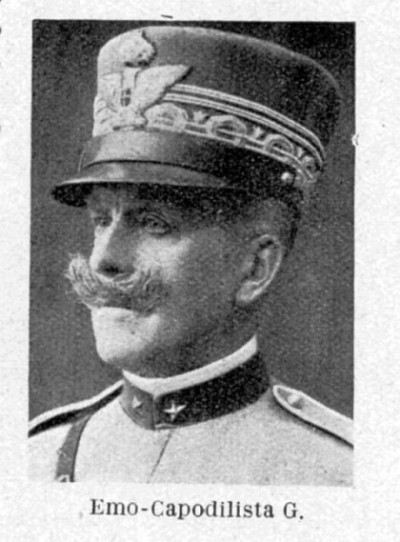
This is where Giorgio Emo Capodilista comes in.
On October 29 he and the II cavalry brigade were ordered to reach Pozzuolo del Friuli and defend it at all costs for at least 24 hours in order to to gain the time necessary for the retreating divisions to reach and cross the Tagliamento.
Emo Capodilista knew, as did his commanding officer, that even though this action was essentially a suicide mission, it was absolutely necessary.
Trying to move forward, his brigades, together with the Bergamo Infantry Brigade, were blocked by the retreating troops (note above the character of this phase — chaos, panic, pandemonium), an appalling spectacle which one writer observed had a “negative influence on the morale of the cavalry.” That’s probably an understatement, because the “difficult psychological atmosphere” created a high risk that the dragoons, on their way to fight Austrians, would stop to fight their own countrymen instead.
Having reached Pozzuolo del Friuli, the II Brigade found a situation even worse than it had expected. Emo Capodilista and his men obeyed their orders to resist the advancing Austrians at any cost, battling non-stop for 24 hours in the streets and piazzas of the small mountain town, and on October 30 the troops of the 3rd Army crossed the Tagliamento. Mission accomplished. Mission of near-total immolation also accomplished. In protecting the retreating army, he lost more than two-thirds of his men.
“I was always embarrassed by the words sacred, glorious, and sacrifice, ” wrote Ernest Hemingway. “I had seen nothing sacred, and the things that were glorious had no glory and the sacrifices were like the stockyards at Chicago if nothing was done with the meat except to bury it…Abstract words such as glory, honor, courage…were obscene beside the concrete names of villages… the names of rivers, the numbers of regiments and the dates.”
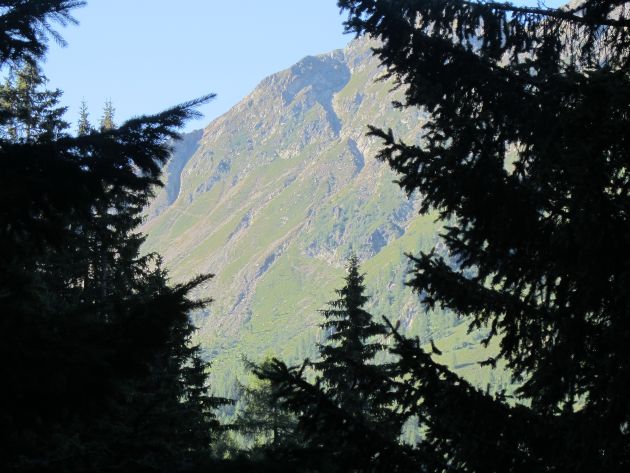
When I was a sprite, we observed November 11 as “Armistice Day.” At some point which I am not going to pause to identify — perhaps it was when the last veteran of the First World War passed on — this occasion was recast as “Veterans’ Day.”
Something similar occurred in Italy, at some point I’m not going to identify; November 4, the date on which the Austrian surrender took effect, is now labeled “Armed Forces Day.”
Call it what you will, here the memory of the hideous calamity of “The First War” or “The War of ’15-’18,” as they also name it here, has not faded. On or near every parish church in Venice you will find a plaque listing the names of the local boys who never returned (names of the fallen of the Second War have also been added).
On the base of the flagpole in Campo Santa Margherita the names of two of Lino’s uncles are inscribed, last name first, the way they do it here: GREGOR ANGELO GREGOR FRANCESCO. When Lino and his twin brother arrived in 1938, his mother named them for her deceased brothers. So I suppose I’m also linked in a way to the Great War.
For those whose interest tends more toward the logistical, many organizations have labored to reconstruct or recover whatever remains along the battle front of the Alpine crest — ruined barracks, partially collapsed trenches, snarls of rusty barbed wire, assorted unexploded bombs, and similar bellicose elements left by men who fought because they were ordered to do so and died because that’s what’s likely to happen in a war, not to mention during an entire winter near the screaming tops of naked mountains: Avalanches, frostbite, disease, not to mention falling chunks of mountain dislodged by the mutual detonation of mines.
Speaking of elements which were left behind, sometimes one of the men himself reappears, revealed by a melting glacier or shifting rockslide. Just think, corpses of forgotten Austrian and Italian soldiers still strewn about those picturesque Alps.

Last August we spent a few days in the Valle dei Mocheni, our favorite valley not far from Trento. Before the War, this area belonged to the Austrian-Hungarian Empire, so when the first shots rang out, Austrian troops were sent into the high valleys to repulse the Italians.
We went further up into a side valley called the Valcava, and passed a sparkling morning walking even further up to the “FeldKapelle,” a reconstructed field chapel at 6,049 feet (1,844 meters) in an area which had been an outpost of the Austrian Kaiserjager and Standschutzen, Austrian infantry corps reorganized as mountain troops to combat the Italian Alpini, the oldest active mountain infantry in the world.
What I love about this place — apart from the fact that it ever existed, which I hate — is that it was repaired by the Alpini of the nearby village of Fierozzo, with the collaboration of the neighboring villages of Palu’ del Fersina and Frassilongo. They made it their project, with the help of archaeological advisers and historians, to restore the chapel and some small nearby structures. You might have thought it would have been the Austrians who’d want to remember their comrades, but here it appears that the Italians wanted to remember their enemies.

As for the denouement of four years of slaughter, here is the succinct report from Wikipedia:
By October 1918, Italy finally had enough soldiers to mount an offensive. The attack targeted Vittorio Veneto, across the Piave. The Italian Army broke through a gap near Sacile and poured in reinforcements that crushed the Austrian defensive line. On 3 November, 300,000 Austrian soldiers surrendered.
The Battle of Vittorio Veneto heralded the dissolution of the Austro-Hungarian Army as an effective fighting force, and also triggered the disintegration of Austria-Hungary.
On October 29, the imperial authorities asked Italy for an armistice, but the Italians continued to advance, reaching Trento, Udine, and Trieste.
On 3 November, Austria-Hungary sent a flag of truce to the Italian Commander to ask again for an armistice and terms of peace. The terms were arranged by telegraph with the Allied Authorities in Paris, communicated to the Austrian Commander, and were accepted.
The Armistice with Austria was signed in the Villa Giusti, near Padua, on 3 November, and took effect on 4 November, at three o’clock in the afternoon.
Peace at last.
Then they all got busy with the paperwork. It wasn’t pretty either. Field-Marshal Earl Wavell said of the Paris Peace Conference: “After the ‘war to end war’, they seem to have been in Paris making the ‘Peace to end Peace.'”
So let’s not look back, let’s face forward. Take tomorrow, November 5: Some notable events that occurred on this day were: The Gunpowder Plot (1605); Italy annexes Tripoli and Cyrenaica (1911); Bulgarian troops in Constantinople blockade drinking water (1912); Britain annexes Cyprus (1914); Britain and France land forces in Egypt (1956). There actually is no end to it all.
So I’m going to go back to thinking about the Mass of commemoration held each year at the FeldKapelle. This year the priests officiating were don Daniele Laghi and don Hans Norbert Slomp. Why can’t it always be like this? I mean, without millions of people having to die first.
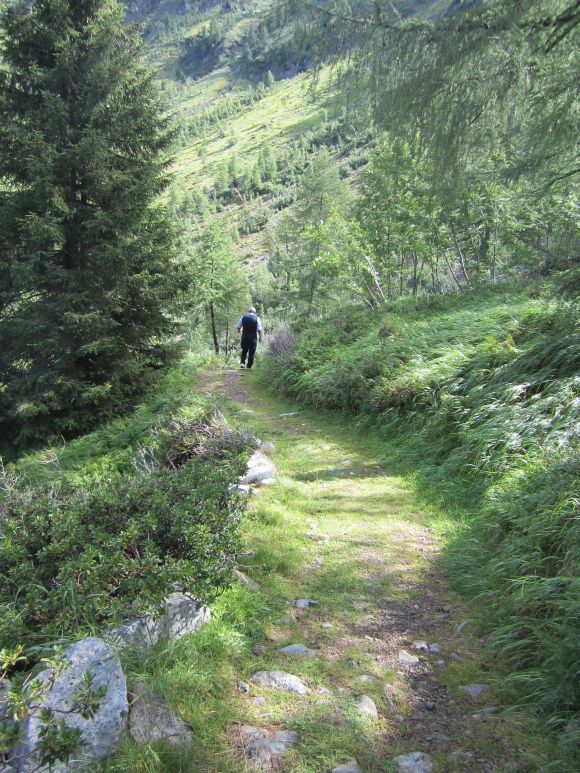

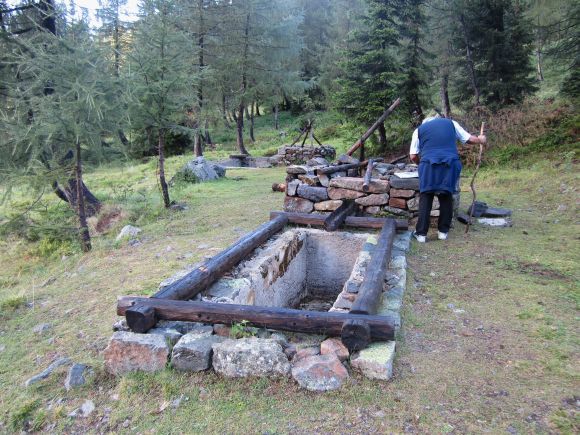
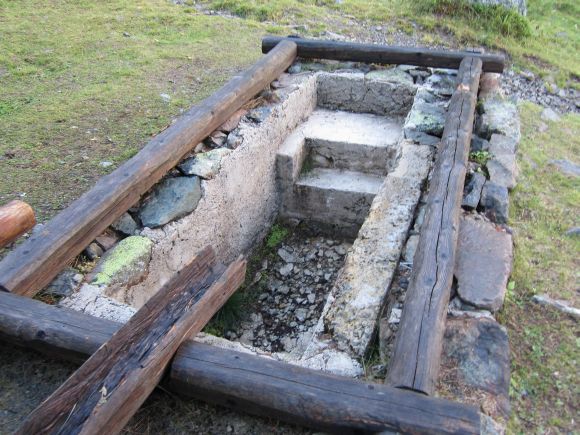
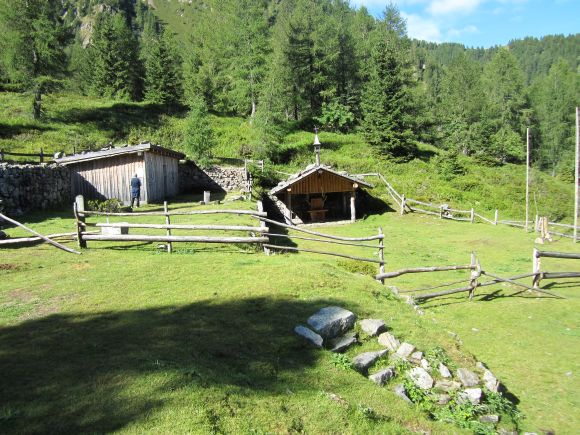
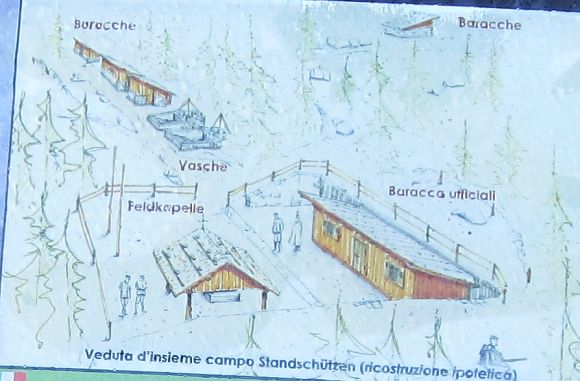
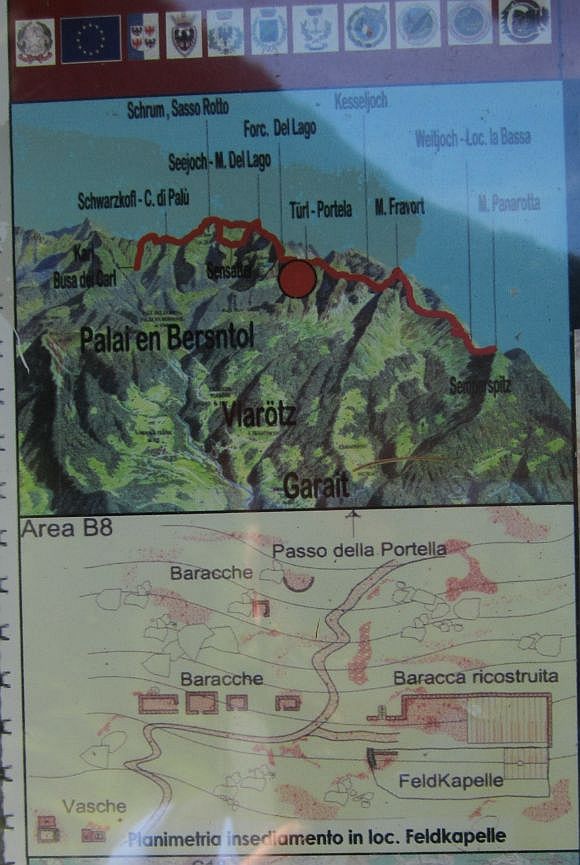
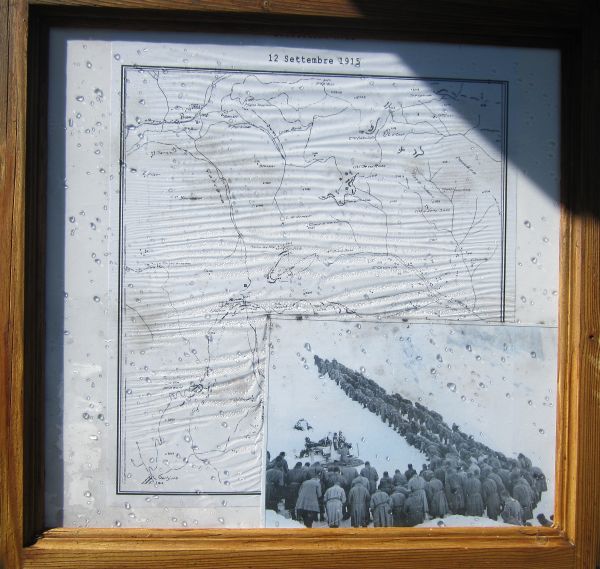
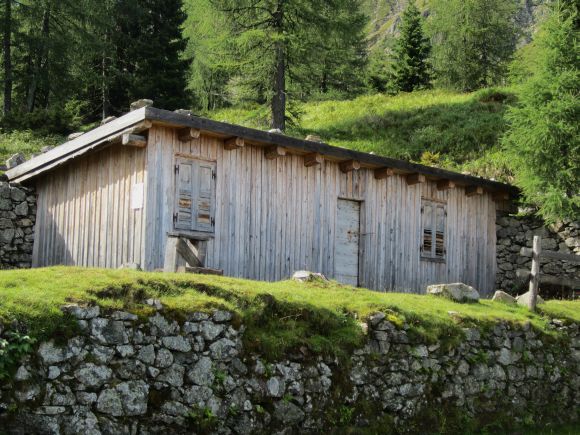
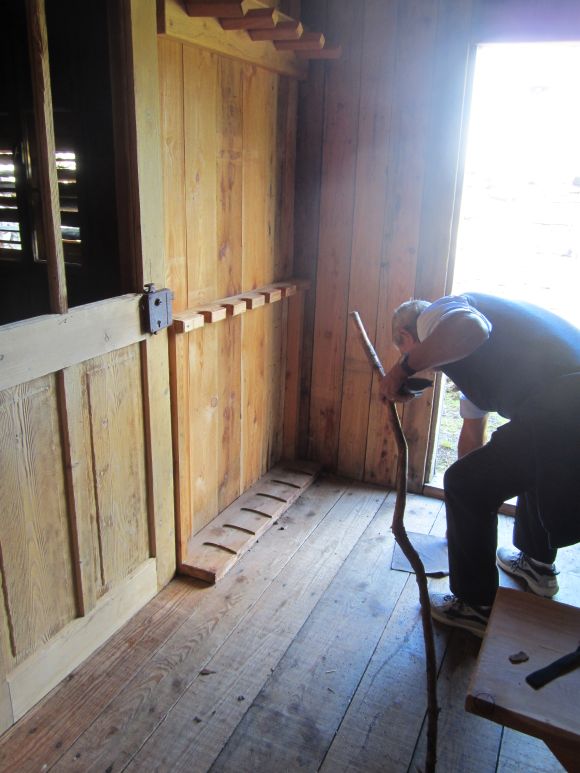
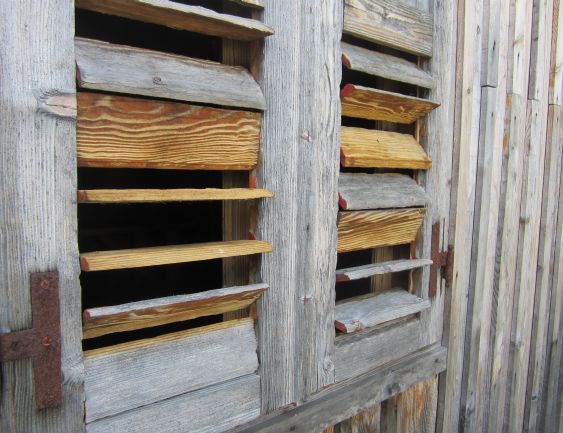
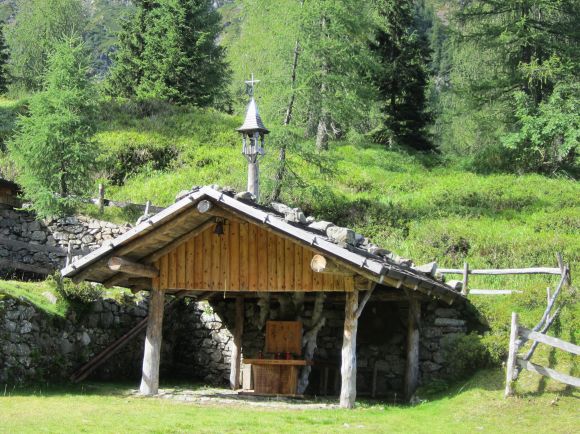

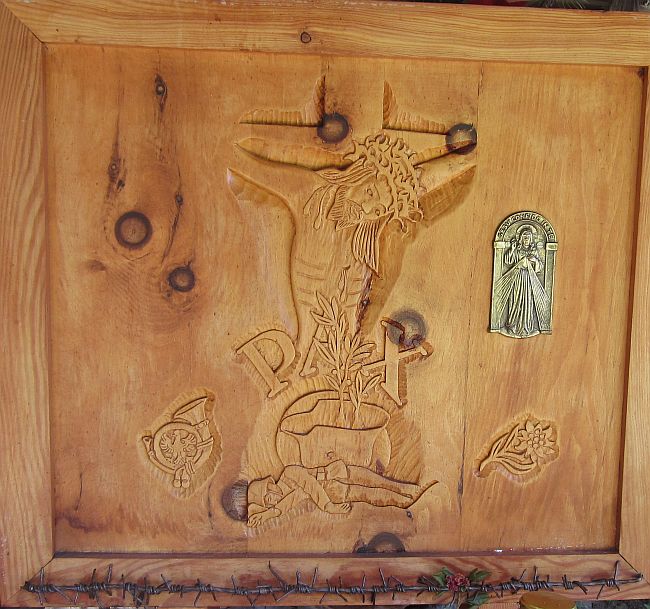
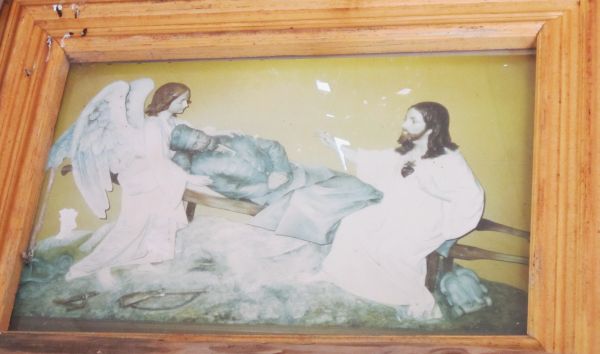


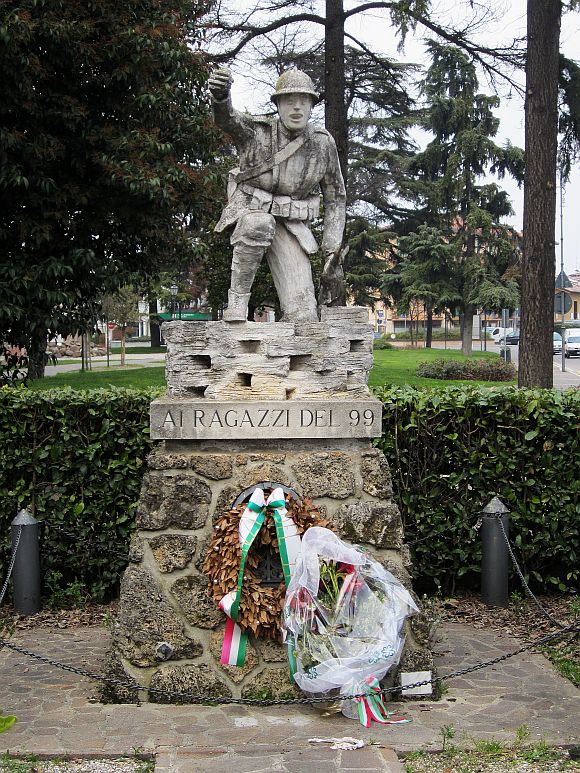
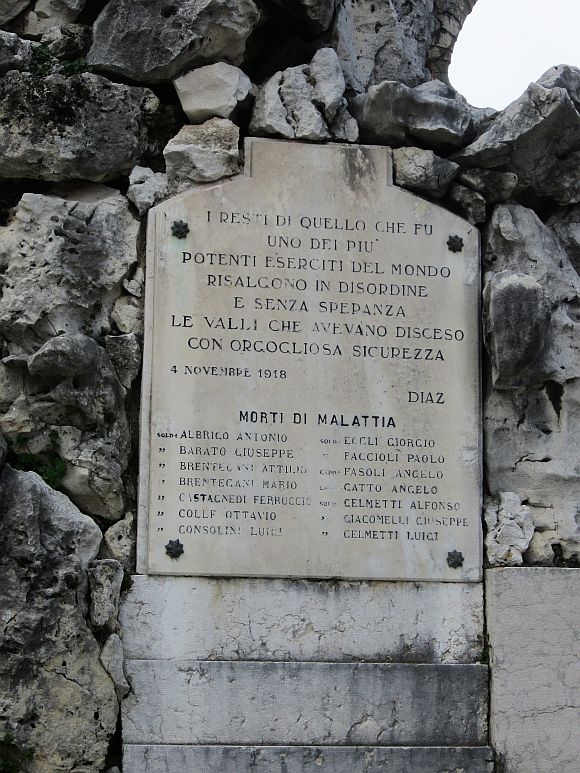
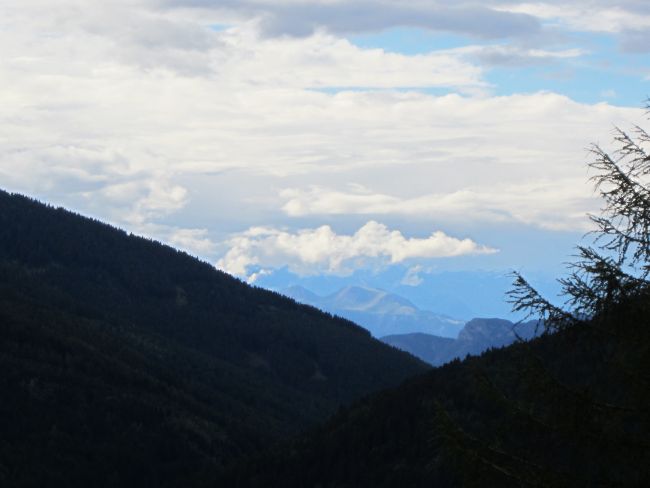
The solemnity (more and/or less) of the past three days — All Saints Day and All Souls Day — dissolves today into the genuine solemnity of the annual commemoration of the end of World War I. November 4 (1918) is the date on which war against the Austro-Hungarian empire and its allies ceased.
It sounds so tidy: Victory. Peace. Ninety years have gone by. Let’s move on.
But every year the moving-on stops, to observe what is now called the Festa of the Armed Forces. Many civic monuments, and not a few of the parish memorials listing the fallen sheep of the local flock, are decorated with shiny fresh laurel wreaths given by the City of Venice. And a ceremony performed by veterans’ groups and other military elements is held every year on this day in the Piazza San Marco.
In Rome, the President of the Republic made the traditional visit to the Tomb of the Unknown Soldier, which soldiers guard night and day.
France had established the first tomb of the Unknown Soldier in 1920, and the Italians wanted to do likewise. They had lost some 1,240,000 men, almost entirely on the northern front which had stretched some 400 miles, almost one-third of the entire Alpine arc. In what some have called history’s greatest mountain battlefield, the gathering and burial of unidentified soldiers had been going on for two years.
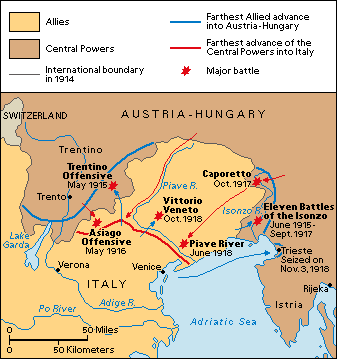
A commission was formed to choose one soldier from each of the eleven sectors of the front (Rovereto, Dolomiti, Altipiani, Grappa, Montello, Basso Piave, Cadore, Gorizia, Basso Isonzo, San Michele, and Castagnevizza). No identifying marks of any kind were to be permitted — no name, or rank, or serial number.
The eleven caskets were taken to the basilica of Aquileia, not far from Trieste. Here they were arranged in a line, and on October 26, 1921, a woman named Maria Bergamas from Gradisca d’Isonzo stepped forward to choose one.
Her son, Antonio, had been killed but his body had never been found. No one imagined, I’m sure, that one of the eleven victims could have been her son. She was there to represent all of the mothers, wives and women of Italy.
One eyewitness reported that she walked toward the row of eleven coffins, “with her eyes staring, fixed on the caskets, trembling…in front of the next to last one, she let out a sharp cry, calling her son by name, and fell on the casket, clasping it.” Strangely, there are less fervid accounts, also by eyewitnesses: “In front of the first coffin she seemed to become faint, and was supported by her escort of four veterans, all decorated with the Gold Medal for Valor. In front of the second, she stopped, held out her arms and placed her mourning veil upon it.”
As a journalist, I can’t grasp how there could be more than one version of the event, but I assume everyone was extremely keyed up.
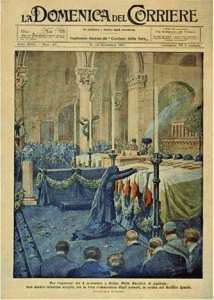
In any case, one was chosen, placed on a gun carriage, lashed onto an open-sided train carriage,and covered with the Italian battle flag. Four other open carriages were attached, to contain the flowers which undoubtedly were going to be offered by the people along the way.
The train stopped at Udine, Treviso, Venice, Padova, Rovigo, Ferrara, Bologna, Pistoia, Prato, Firenze, Arezzo, Chiusi, Orvieto, and finally Rome. But in fact it stopped — was stopped, actually, by the throngs which had waited for hours to see it — at all the stations, even the tiniest. Some threw flowers, others clasped their hands and knelt.
The train arrived in Rome on the evening of November 3, and the casket was taken to the basilica of Santa Maria degli Angeli e dei Martiri near the station. Mourners passed all night to pay their respects.
The next day, November 4, 1921, the war would formally end at 3:00 PM. The cortege proceeded slowly down the Via Nazionale toward Piazza Venezia and the massive monument known as the Vittoriano, where the body would be entombed.

Total silence reigned. King Vittorio Emmanuele III walked behind the gun carriage bearing the casket. At the monument, the casket was lifted and carried by six veterans, all of whom had been decorated with the Gold Medal for Valor. Finally, it was placed in the space beneath the statue of the ancient goddess Roma. http://www.youtube.com/watch?v=RrOMk91vCfo
You might be surprised, as I have been, to discover how many poems (at least in Italian) have been written about the Unknown Soldier. Some are even composed as accusations, reflections, admonitions, rebukes, spoken directly to the reader by the Soldier. There is also a number of songs about him and/or war, in the mold of the protest songs of the Sixties and early Seventies. They seem dated and futile.
Well, of course they’re futile. Just look around. Still, some respect for the fallen is the least we can do. Or apparently the most we can do.
